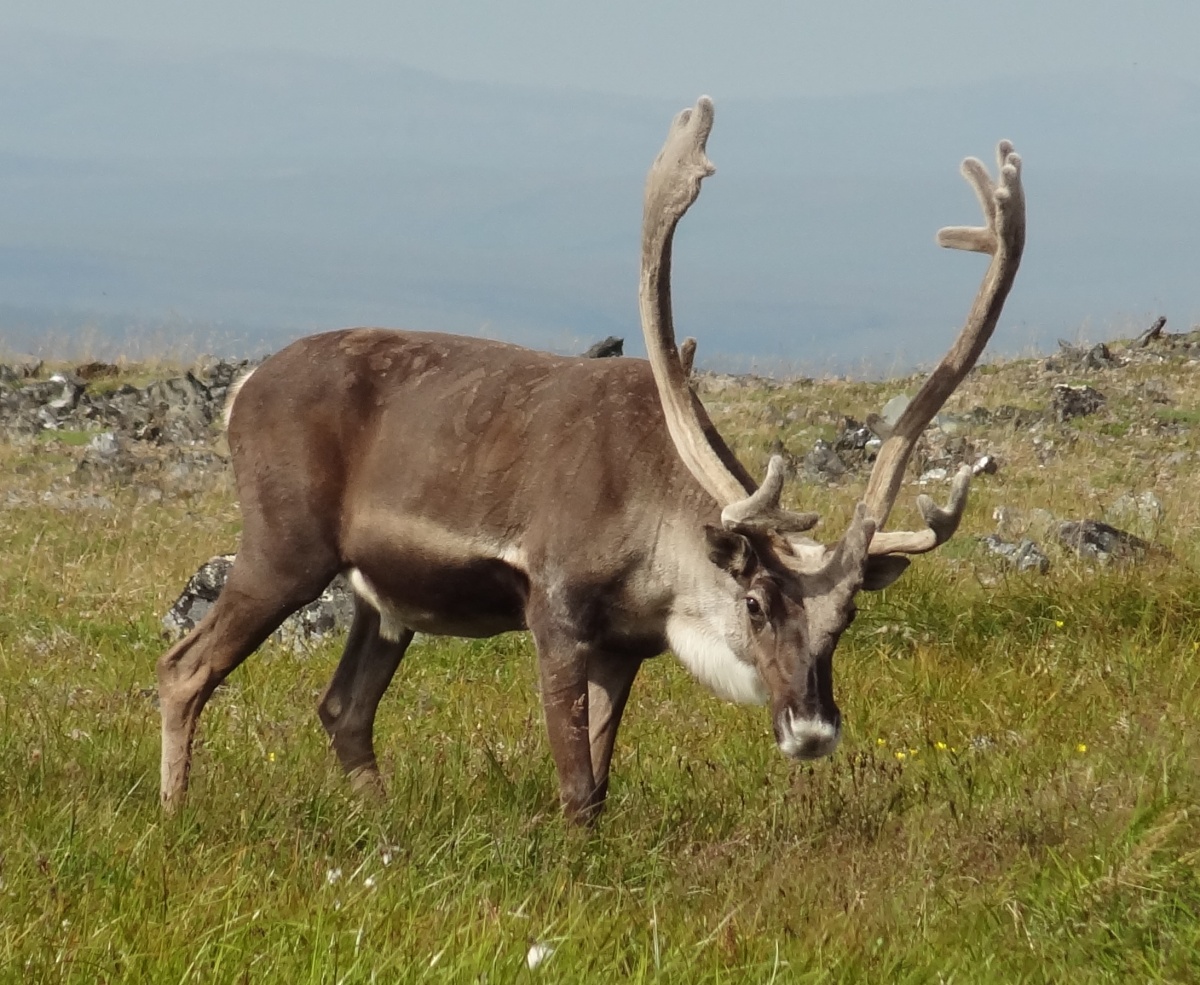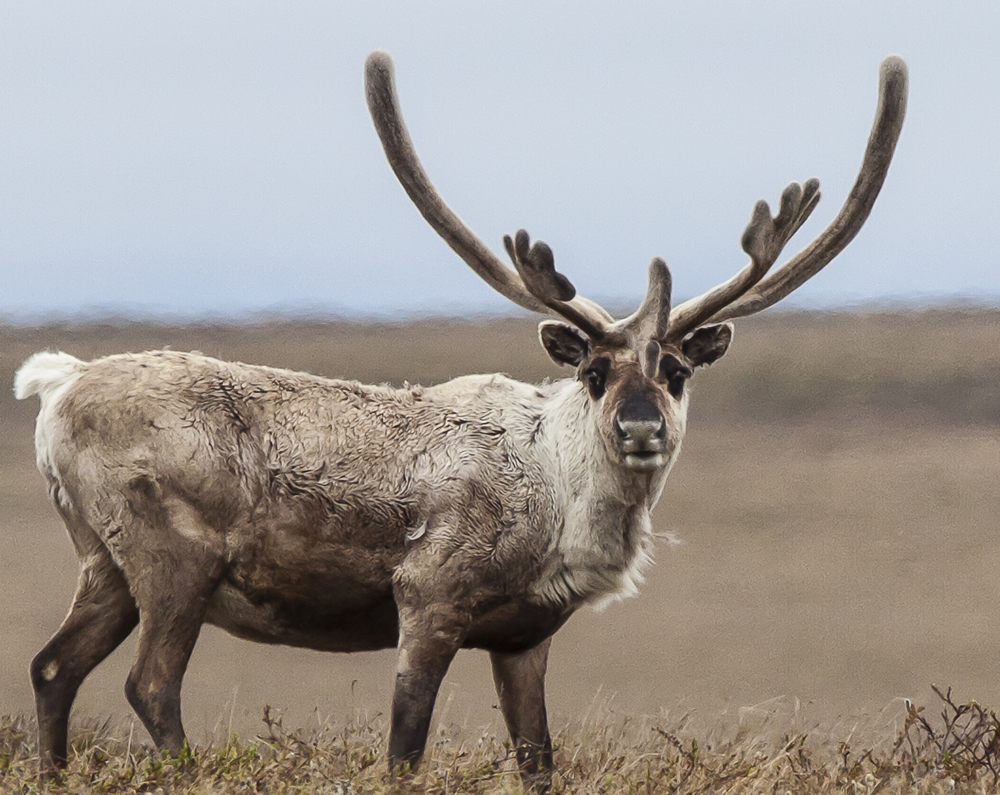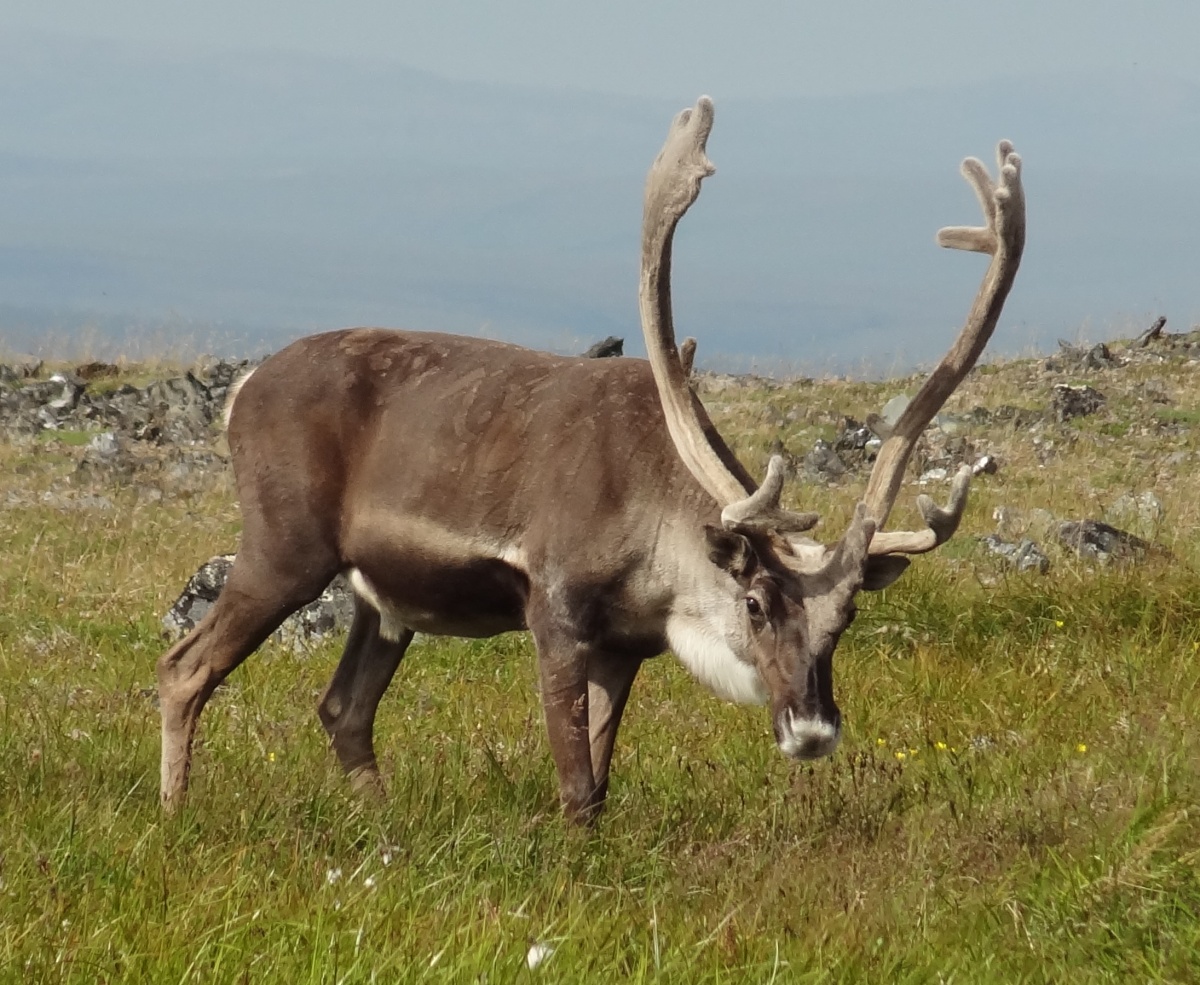Reindeer Grazing in Alaska
 BLM Rangeland is managed for sustainable ecosystem services across the landscapes, while maintaining BLM Alaska Land Health Standards. Rangelands are the source of habitat and forage for wild and domestic animals. Reindeer grazing is just one of the many multiple uses across the 3.8 million acres of BLM managed public lands on the Seward Peninsula.
BLM Rangeland is managed for sustainable ecosystem services across the landscapes, while maintaining BLM Alaska Land Health Standards. Rangelands are the source of habitat and forage for wild and domestic animals. Reindeer grazing is just one of the many multiple uses across the 3.8 million acres of BLM managed public lands on the Seward Peninsula.
Livestock grazing in Alaska is considered and authorized on a case by case basis. Currently, there are no domestic livestock grazing on BLM-managed lands in Alaska. However, reindeer herders on the Baldwin and Seward Peninsulas have received permits to graze semi-domesticated reindeer on 15 designated traditional grazing ranges.
Reindeer grazing in Alaska is regulated by 43 CFR Part 4300 and the 1937 Reindeer Industry Act.
Reindeer Grazing Permits
Only Alaska Natives can apply for reindeer grazing permits under the 1937 Reindeer Industry Act. As long as the reindeer stock comes from a source outside of the original Chukotka-sourced stock introduced by Sheldon Jackson in the 1890s, all other interested parties may apply for a reindeer grazing permit. The BLM addresses all applications on a case-by-case basis and conducts NEPA analysis.
Free-ranging herds graze on large, unfenced traditional grazing ranges that may include over a million acres of land. All ranges contain land managed by different land owners or agencies. BLM cooperates with the state, NPS and other land managers to issue grazing permits. Applications for grazing permits and grazing management plans are required prior to grazing on BLM managed lands (Grazing Permit Application Form 4201-1). The Kobuk-Seward Resource Management Plan provides guidelines for reindeer grazing. No grazing fee is charged, but a $10 filing fee is charged with each application.
Learn more about Alaskan reindeer as well as caribou below.
Characteristics of Chukotka breed of reindeer introduced to the Seward Peninsula, Alaska
Seward Peninsula Reindeer, tarandus tarandus, is the domesticated “reindeer” subspecies. Different R. t. tarandus varieties have been developed in Asia and Russia to suit local conditions and human needs, such as transportation milk and meat. Chukotka the most recent (last) breed developed around 1000 AD.
Characteristics of breed:
- Developed primarily for meat and hide production not as a draft or pack animal.
- Carcasses noted for their high ratio of muscle tissue to bone, the meatiness of the carcasses. Very fine muscle fibers.
- Rate of fat deposition and percentage of carcass is higher than in other breeds.
- Large fat deposits enables animals to survive long periods of poor foraging conditions during winter.
- Calving occurs 15-20 days earlier than in other breeds.
- Calf growth rate is very high and reach maturity at a young age. Calves in good body condition may go into estrus and conceive.
- Chukotka reindeer are comparatively resistant to necrobacillosis and pulmonary diseases and more easily endure insect harassment.
- Most Chukchi herding was conducted on foot so animals with a strong herding instinct and weak migratory behavior were selected for cultivation.
- As a result exhibit a high degree of site-fidelity even if local areas become overgrazed.
Characteristics of Alaskan Caribou

Caribou (Rangifer tarandus) have large, concave hoofs that spread widely to support the animal in snow and soft tundra. The feet also function as paddles when caribou swim. Caribou are the only member of the deer family (Cervidae) in which both sexes grow antlers. Antlers of adult bulls are large and massive; those of adult cows are much shorter and are usually more slender and irregular.
In late fall, caribou are clove-brown with a white neck, rump, and feet and often have a white flank stripe. Weights of adult bulls average 350-400 pounds (159-182 kg). Mature females average 175-225 pounds (80-120 kg). Caribou in northern and southwestern Alaska are generally smaller than caribou in the Interior and in southern parts of the state.
Caribou in Alaska are distributed in 32 herds or populations and include 7 subspecies. A herd uses a distinct calving area that is separate from the calving area of other herds, but different herds may mix on winter ranges.
Learn more about Alaska's Caribou from the Alaska Department of Fish and Game Caribou Page.

